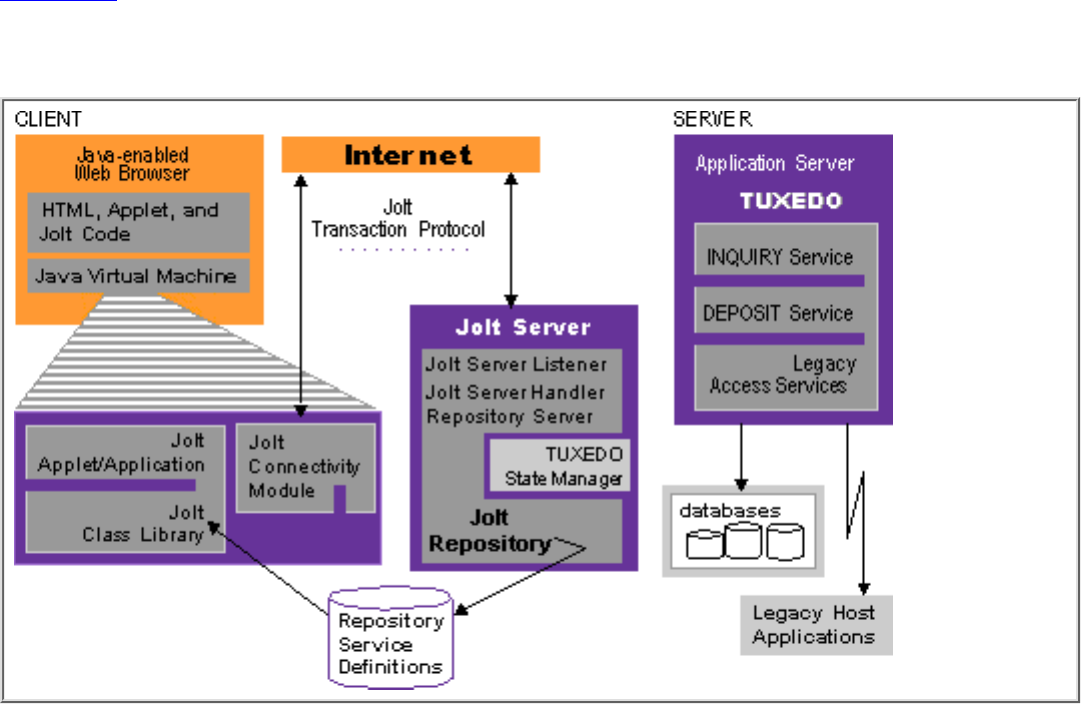Jolt 1.2 Developer's Guide
Table Of Contents
- Jolt for NonStop(TM) TUXEDO Developer's Guide
- Jolt for NonStop(TM) TUXEDO Developer's Guide
- About This Guide
- 1. Introducing Jolt
- 2. Installing Jolt
- 3. Configuring the Jolt System
- 4. Bulk Loading NonStopTM TUXEDO Services
- 5. Using the Jolt Repository Editor
- 6. Using the Jolt Class Library
- 7. Using JoltBeans
- 8. Using Servlet Connectivity for NonStopTM TUXEDO
- 9. Using Jolt 1.2 ASP Connectivity for NonStopTM TUXEDO
- A. NonStopTM TUXEDO Errors
- B. System Messages
- Index

How Jolt Works
Jolt connects Java clients to applications built using the NonStop
TM
TUXEDO system. The
NonStop
TM
TUXEDO system provides a set of modular services, each offering specific
functionality related to the application as a whole. For example, a simple banking application
might have services such as INQUIRY, WITHDRAW, TRANSFER, and DEPOSIT. Typically,
service requests are implemented in C or COBOL as a sequence of calls to a program library.
Accessing a library from a native program means installing the library for the specific
combination of CPU and operating system release on the client machine, a situation Java was
expressly designed to avoid. The Jolt Server implementation acts as a proxy for the Jolt client,
invoking the NonStop
TM
TUXEDO service on behalf of the client. The Jolt Server accepts
requests from the Jolt clients and maps those requests into NonStop
TM
TUXEDO service
requests.
Figure 1-1 illustrates the end-to-end view of the Jolt architecture, as well as related NonStop
TM
TUXEDO components and their interactions..
Figure 1-1. Jolt Architecture
Jolt Server
The Jolt Server has several components that work together to pass Jolt client transaction
processing requests to the NonStop
TM
TUXEDO application:
Jolt Server Listener (JSL). Handles the initial Jolt client connection and assigns a Jolt
client to the Jolt Server Handler.
●










